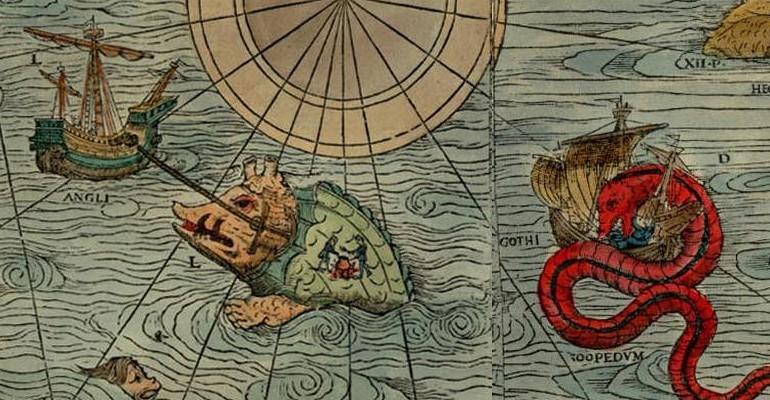Engine manufacturer and technology provider Wärtsilä published a report Debunking the Mythical Beasts of Maritime Digital Transformation which likens fears over digitalisation to ancient fears of sea monsters.
“Our report draws striking parallels between the fears and misunderstandings that gave rise to vivid stories of famous mythological sea monsters that live on in folklore today and highlights the apprehension that many modern-day maritime professionals feel towards the largely unchartered ocean of digital transformation,” said Michael Christiansen, Vice President, Smart Vessel, Wärtsilä.
Based on a survey by Lloyd’s List Intelligence late last year with 221 respondents, the research claims a contradiction in the industry’s approach to digitalization, with scepticism pitchedd against a broad belief in digitalisation as a positive influence.. 78% of respondents agreed that change and technological innovation are a good thing, and 70% had a very clear understanding on the benefits of digitalisation and its necessity, but 56% believed time and cost implications are too high, 69% believed retrofitting existing assets and infrastructure was challenging and 63% believe there was a lack of skills among seafarers to operate new technology.
Fears over the skill base of seafarers are stoked by the lack of clarity on what digitalisation really means, said the report: “This is significant. Without buy-in from a larger proportion of maritime industry professionals (especially key decision-makers) from the outset, sustainable and successful digital transformation will be impossible.”
The absence of a consensus on what digitalisation means for shipping brings division and confusion, Wärtsilä claimed, and one part of the answer is in treating digitalisation as a step-by-step process rather than an all-in, immediate transformation.
“This is about quick wins and small gains, trial and error, and agile decision-making – skills that must be cultivated across the industry if it is to withstand the ongoing disruption in the global trading system post-pandemic,” said the report.
Highly automated shipping is presented in the report as a transformative process for jobs in shipping, but one that raises fears in maritime professionals concerned about the automation of their roles. The answer to that, according to Wärtsilä, is consulting professionals at all levels about the introduction of technologies and the impacts it will have.
“The best use case of automation creates the opportunity to enhance people’s roles and make the most of their unique skills and experience, leading to safer, healthier and happier employees,” said the report.
The report goes into further details on attitudes to decision support, regulation, decarbonisation and attracting the next generation of talent.
“As each organisation within the maritime industry will be at a different stage of its own journey, we must appreciate it as an iterative and stepwise process. There is still much work to be done to bridge the gaps – break the silos – between digital systems. To do this, we can and must share and learn from each other’s experiences because digitisation won’t be achieved by any one player alone. We need to work together to build an ecosystem where digital technologies on board a ship talk to those in offices on shore. This is how, as an industry, we can reframe the route to digitalisation and turn threats into opportunities,” said Christiansen.
Copyright © 2024. All rights reserved. Seatrade, a trading name of Informa Markets (UK) Limited.
Add Seatrade Maritime News to your Google News feed.  |

